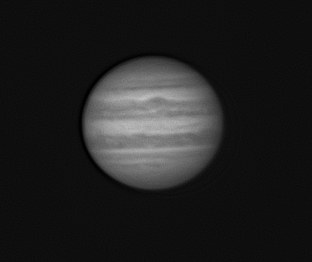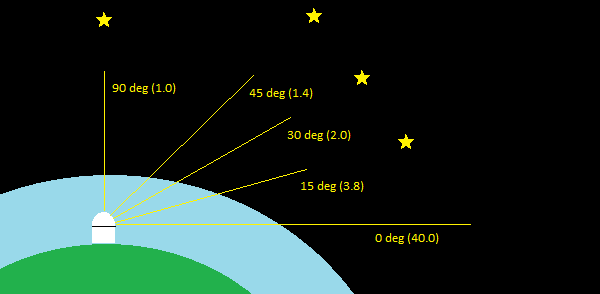The sky last night was one of the darkest (and clearest) we have had in quite a few weeks. I was able to get a short JunoCam series before Jupiter hit my western tree line.

Ideally, if you want to image for an hour, the best time as far as the atmosphere is concerned, is the half-hour before the target gets to the zenith and the half-hour after it passes the zenith. But right now Jupiter gets only 55° high and is well past the meridian before the sky gets dark. That means the planet starts with less than optimal airmass and as the night progresses descends into ever increasing airmass.

Airmass is the length of the pathway through the atmosphere that the photons from the object you are looking at have to pass. The path length above the zenith is about 100 km and the path length along the horizon is about 1020 km. By definition, airmass is 1.0 for an object directly on the observer’s zenith. The lower in the sky, the higher the airmass gets. The longer atmospheric path means more distortion, absorption and refraction.
Close to the horizon, the object doesn’t look like it really does (distortion), isn’t as bright as it really is (absorption) and isn’t where it looks like it is (refraction).